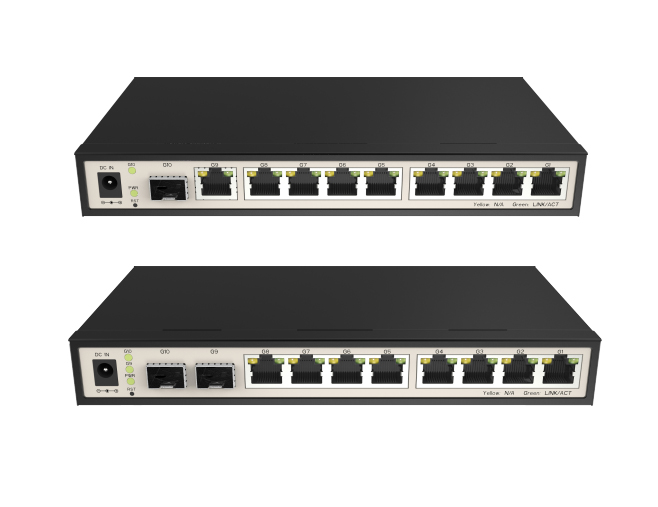The network can be "segmented" by using a managed industrial network switch. By comparing the MAC address table, the switch only allows necessary network traffic to pass through the switch. The filtering and forwarding of managed industrial network switches can effectively isolate broadcast storms, reduce packet errors and packet errors, and avoid sharing conflicts.
Although a unmanaged industrial network switch can filter many data packets from a device, there are still many data packets that cannot be processed by the unmanaged Industrial Switch, and these data packets must be transmitted from the port to all devices. When a device receives packets that are not specific to the device, it must first consume resources to process these information data before discarding them. This delays the information processing actually pointing to the device, and reduces the efficiency of data processing.

The managed industrial network switch can help you solve this problem in the following three ways:
Multicast filtering
Multicast is one of the three ways of IP transmission. IP multicast communication refers to that IP messages are sent from a source and forwarded to a group of specific receivers. Compared with traditional unicast and broadcast, IP multicast can effectively save network bandwidth and reduce network load, so it is widely used in network services such as video, real-time data transmission and monitoring.
Compared with unicast, since the transmitted information starts to be copied and distributed at the network node as far away from the information source as possible, the increase of users will not lead to the increase of information source load and the significant increase of network resource consumption. Compared with broadcasting, the transmitted information will only be sent to the receiver who needs it, so it will not waste network resources and improve the security of information transmission.
Industrial control systems often see a large multicast packet, which cannot be filtered by unmanaged industrial network switches. The managed industrial network switch can intelligently "understand" whether certain multicast packets should be sent to the devices connected to its ports, and filter or not them accordingly.
VLAN
What is VLAN? VLAN is the abbreviation of Virtual Local Area Network. VLAN is a data exchange technology that divides the local area network (LAN) devices into network segments (or smaller LAN) logically (not physically) to achieve virtual workgroups (units). VLAN is a logical way to divide networks. In the past, physical separation was required to divide networks. However, in many cases, it is difficult to physically separate the network. However, the VLAN provided by the managed industrial switch can simplify the settings and achieve the network isolation required in these situations.
The broadcast and unicast traffic within a VLAN will not be forwarded to other VLAN, thus helping to control traffic, reduce equipment investment, simplify network management, and improve network security. In addition to the advantages of dividing the network into multiple broadcast domains to effectively control the occurrence of broadcast storms and make the topology of the network very flexible, VLAN can also be used to control the mutual access between different departments and different sites in the network.
QoS
QoS (Quality of Service) refers to that a network can use various basic technologies to provide better service capability for designated network communication. It is a security mechanism of the network and a technology used to solve problems such as network delay and congestion.
When the network is congested, all data flows may be discarded; In order to meet users' requirements for different quality of service for different applications, the network needs to be able to allocate and schedule resources according to users' requirements, and provide different quality of service for different data streams: priority should be given to the processing of real-time and important data packets; For ordinary data packets with poor real-time performance, it provides lower processing priority and even discards them when the network is congested.
For the same terminal device, some traffic and data may be more important than others. Using the QoS function, the managed industrial network switch can label the data packets that enter the managed industrial switch, so that the data packets have higher priority and enter another managed industrial network switch. Before sending the packet to the device, the label on the packet is deleted by the last managed industrial network switch. If the terminal device supports it, you can also label the packets it sends.
Contact: sales
Phone: 18688787693
E-mail: sales@hsindustrialswitch.com
Add: Room 608, Building B,GaoXinQi TEC Park,Baoan District, ShenZhen,China